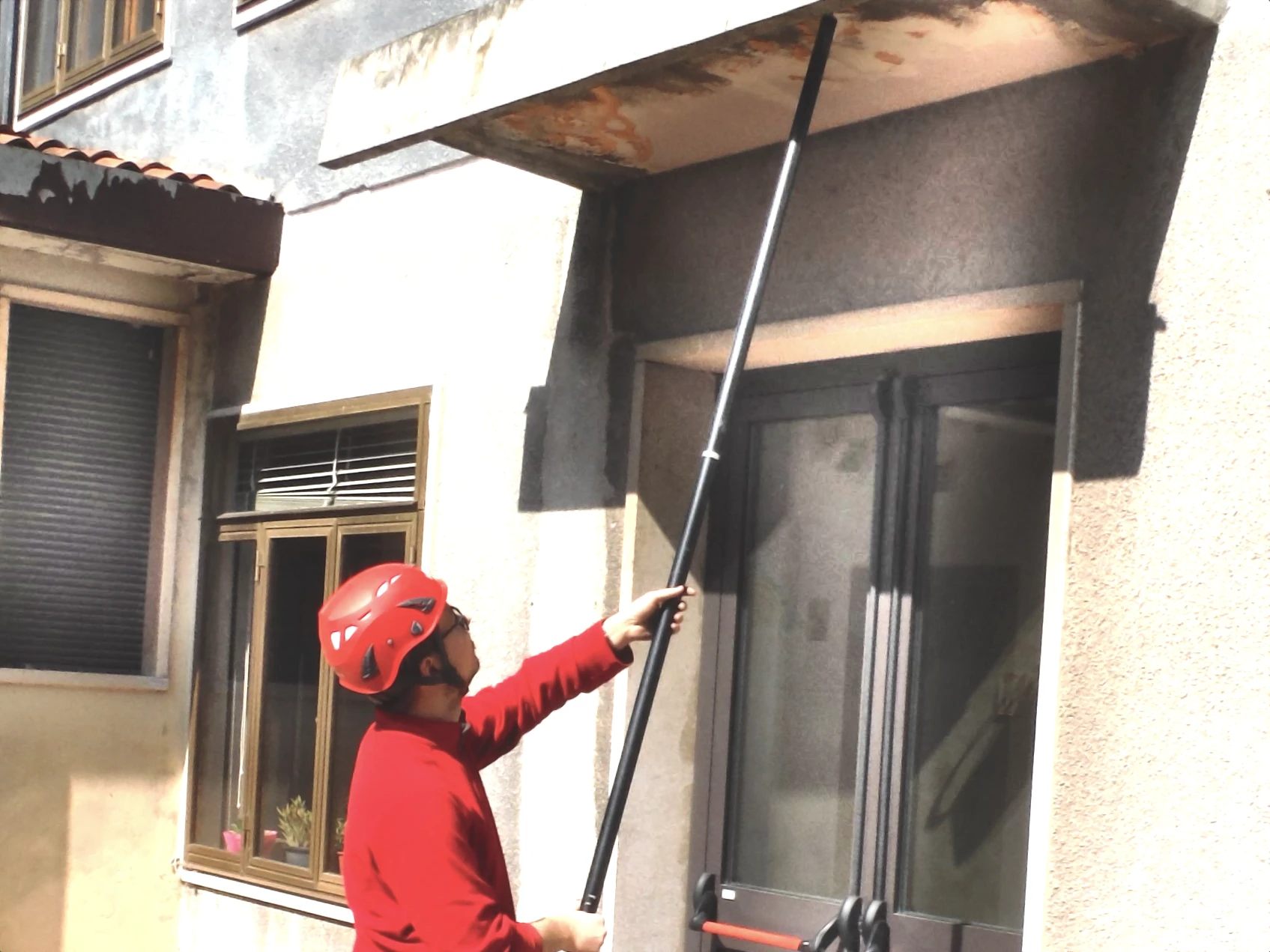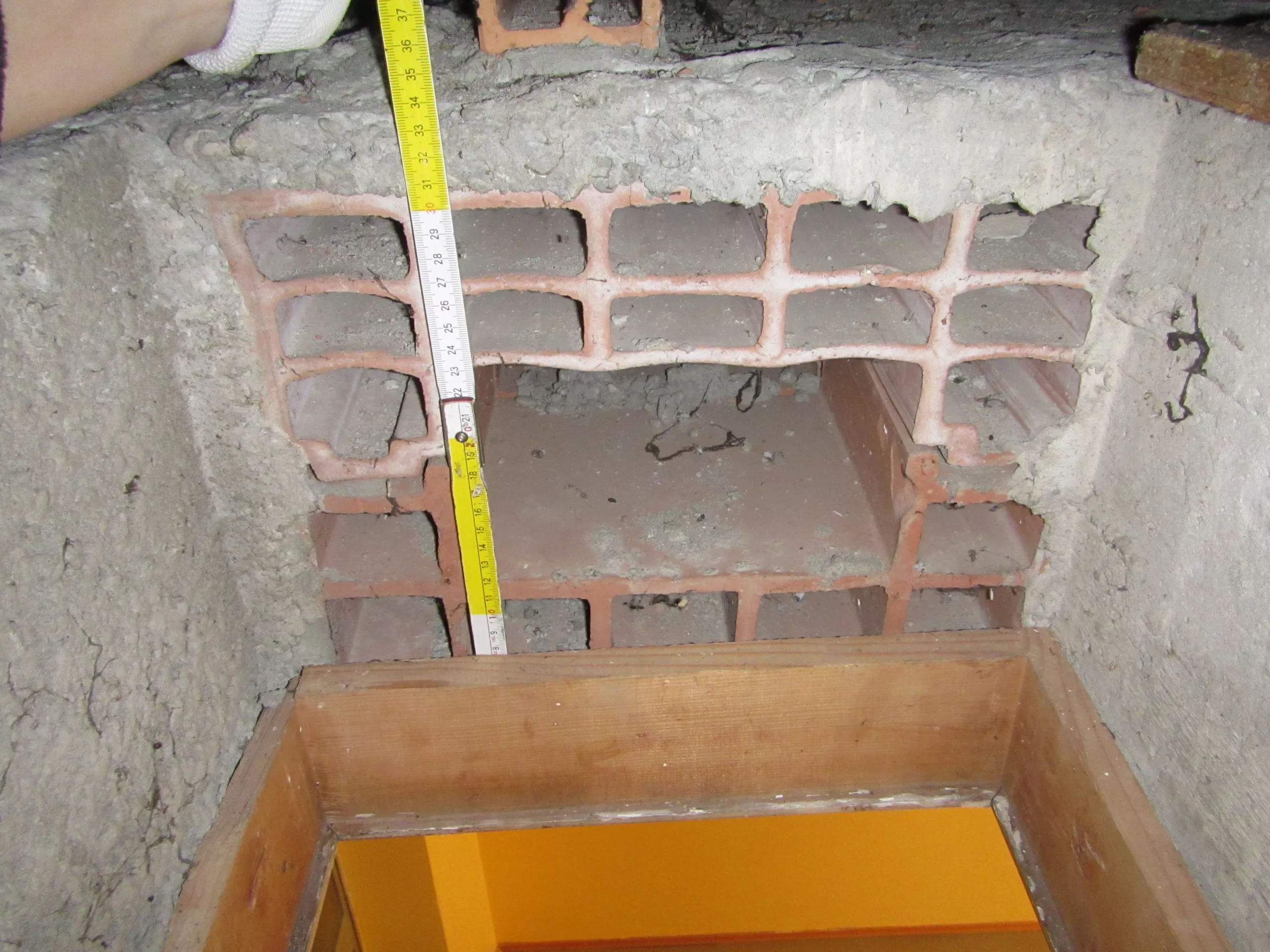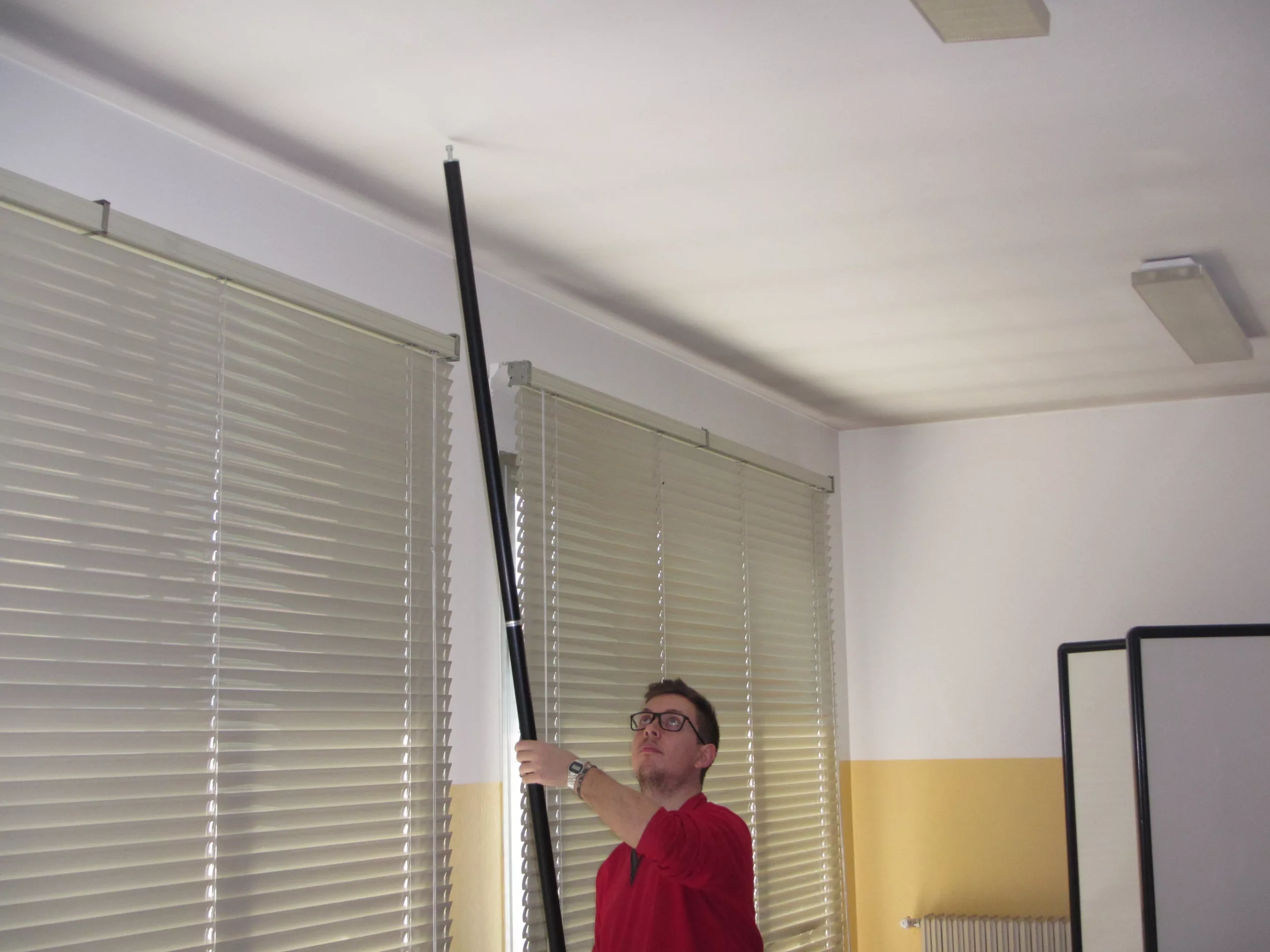


Ceilings stability checks
To assess the possible detachment of hollow clay floor slab blocks lower surface, or thick layers of plaster at the intrados of reinforced concrete slabs, and/or the presence of false ceilings which may be feared to have an incorrect or degraded connection to the load-bearing structures, it is advisable to proceed according to the methodology indicated below:
Passive thermography
Thermography is used to detect the structure of the floor and the presence of anomalies (water infiltration, presence of plaster detachment, …).
Floor inspections
To recognize the floor construction type, inspections are carried out by endoscope on drilled holes with a minimum diameter of 12 mm, to define the floor stratigraphy operating from the intrados or extrados, thus evaluating the presence of technological weaknesses.
Floor acoustic response
In order to assess the condition of clay elements (or the plaster coating) potentially affected by delamination or detachment, a manual percussion test is performed on the floor slab using a regular grid (approximately 50×50 cm). This is done with a hollow aluminium rod with a solid head or a rigid polyethylene mallet. Any noise anomaly (dull thud) indicates the possible presence of plaster detachment or lower hollow brick layer. This preliminary screening allows for the inspection of the entire surface and helps refine the diagnosis, which can be followed, if necessary, by an instrumental testing phase.
Instrumental analysis (superficial acoustic auscultation)
In the areas where a “doubtful” response is found through manual tapping, percussion is performed with a mechanical actuator (generation of acoustic impulse) with recording of the signal.
Inspection of false ceiling structure and anchors
A detailed inspection is required to acquire adequate knowledge on the anchoring systems, and conditions of existing false ceilings. Visual inspections and photographic documentation are performed, with additional checks on the anchoring of non-structural elements attached to the ceiling system.
For each identified type of false ceiling (where geometrically feasible), load tests are conducted by applying concentrated weights to individual fixings anchored to the slab. The load is maintained for several minutes to verify the reliability of the anchoring system. Particular attention is given to the system’s ability to maintain the applied load without signs of slippage of the anchoring devices from the structural elements or damage to the suspension cables.
Technical report with colour map
A final technical report summarizing the areas subjected to possible structural or false ceiling deterioration is drawn up, based on a colour scale according to the hazard detected.
